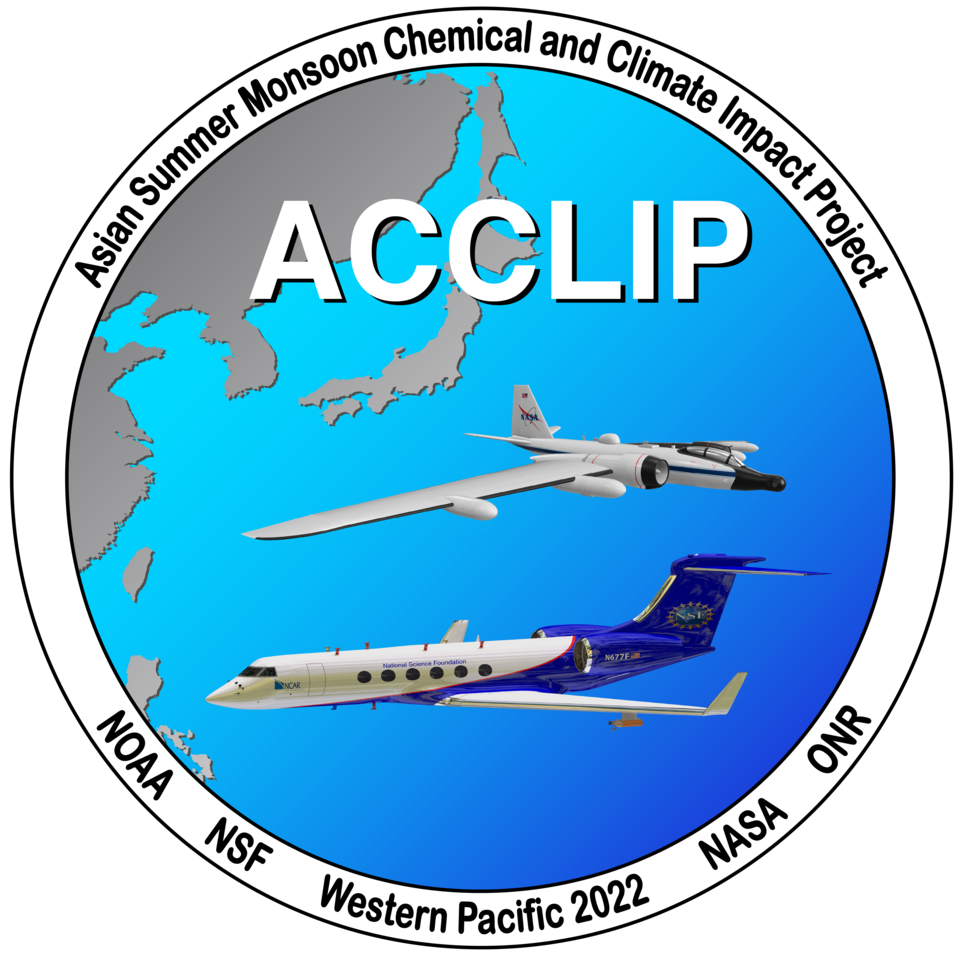ACCLIP - Asian Summer Monsoon Chemical and Climate Impact Project
Osan (South Korea) - July/August 2022

The mission focused on the export of Asian summer monsoon (ASM) processed air towards the western Pacific upper troposphere and lower stratosphere (UTLS) region. It is necessary to better understand the impacts of aerosol and gas-phase emissions in South and East Asia on global chemistry and climate via the connection of the ASM circulation. The key research objectives address:
- the transport pathways (vertical range, intensity, and time-scale) of the ASM uplifted air from inside of the anticyclone to the global UTLS
- the chemical content of air processed in the ASM for UTLS ozone chemistry, and short-lived climate forcers
- the information on aerosol size, mass and chemical composition for determining the radiative impact
- the water vapor distribution associated with the monsoon dynamical structure.
Two research aircraft (the NASA WB-57 and the NCAR G-V) were equipped with a comprehensive suite of instruments measuring dynamical, chemical and microphysical properties. In total, we successfully conducted 14 research flights out of Osan (South Korea).
ERICA (ERC Instrument for the Chemical composition of Aerosols) on board the HIAPER GV
P. Brauner, O. Eppers, A. Dragoneas, S. Molleker, O. Appel, A. Hünig, F. Köllner, S. Borrmann
ACCLIP video on You Tube channel of NASA ESPO
L. Pan (NCAR), P. Newman (NASA)
E. Atlas (U Miami), W. Randel (NCAR), B. Toon (CU), T. Thornberry (NOAA)
D. Murphy, G. Schill, C. Williamson, C. Brock, J. Schwarz (NOAA)
T. Campos, E. Apel, W. Smith (NCAR)
V. Treadaway (U Miami)
